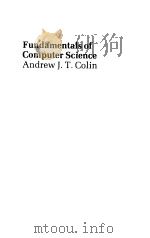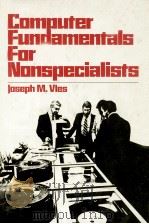《DIGITAL COMPUTER FUNDAMENTALS》
| 作者 | THOMAS C. BARTEE 编者 |
|---|---|
| 出版 | MCGRAW-HILL |
| 参考页数 | 563 |
| 出版时间 | 1977(求助前请核对) 目录预览 |
| ISBN号 | 0070038929 — 求助条款 |
| PDF编号 | 813977268(仅供预览,未存储实际文件) |
| 求助格式 | 扫描PDF(若分多册发行,每次仅能受理1册) |
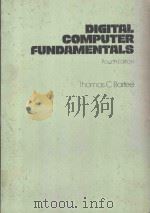
1COMPUTER OPERATION1
1.1 Calculators and Computers2
1.2 Differences between Desk Calculators and Computers4
1.3 Electronic Digital Computers4
1.4 Application of Computers to Problems6
1.5 Applications of Computers in Business8
1.6 Scientific Applications9
1.7 Some Different Types of Computer Systems11
1.8 The Use of Digital Computers in Control Systems14
1.9 Special-Purpose and General-Purpose Computers16
1.10 Time-shared Computer Systems17
1.11 Basic Components of a Digital Computer18
1.12 Construction of Memory20
1.13 Instructions20
1.14 Multiplication Instruction23
1.15 BRANCH,SKIP,or JUMP Instructions25
1.16 Reading the Program into the Computer26
1.17 Programming Systems33
1.18 Assembly Languages34
1.19 Compiler Languages37
1.20 A Short Introduction to PL/138
Questions42
2 NUMBER SYSTEMS47
2.1The Decimal System48
2.2 The Binary System49
2.3 Counting in the Binary System49
2.4 Binary Addition and Subtraction51
2.5 Binary Multiplication and Division51
2.6 Converting Decimal Numbers to Binary53
2.7 Negative Numbers54
2.8 The Use of Complements to Represent Negative Numbers56
2.9 Complements in Other Number Systems57
2.10 Binary Number Complements57
2.11 Binary-coded-decimal Number Representation58
2.12 Octal and Hexadecimal Number Systems61
Questions65
3 BOOLEAN ALGEBRA AND GATE NETWORKS73
3.1Fundamental Concepts of Boolean Algebra74
3.2 Logical Multiplication75
3.3 OR Gates and AND Gates76
3.4 Complementation and Inverters78
3.5 Evaluation of Logical Expressions79
3.6 Evaluation of an Expression Containing Parentheses80
3.7 Basic Laws of Boolean Algebra82
3.8 Proof by Perfect Induction84
3.9 Simplification of Expressions86
3.10 De Morgan’s Theorems86
3.11 Basic Duality of Boolean Algebra87
3.12 Derivation of a Boolean Expression87
3.13 Combination of Gates91
3.14 Sum-of-Products and Product-of-Sums92
3.15 Derivation of Product-of-Sums Expressions94
3.16 Derivation of a Three-Input-Variable Expression95
3.17 NAND Gates and NOR Gates97
3.18 The Map Method for Simplifying Expressions100
3.19 Subcubes and Covering103
3.20 Product-of-Sums Expressions-Don’t-cares108
Questions110
4 LOGICAL DESIGN124
4.1 The Flip-Flop125
4.2 The Transfer127
4.3The Clock128
4.4 The Shift Register131
4.5 The Binary Counter132
4.6 BCD Counters138
4.7 Integrated Circuits139
4.8 Medium- and Large-Scale Integration148
4.9 Gated Flip-Flop Designs.152
4.10 The Gated Flip-Flop152
4.11 The Master-Slave Flip-Flop154
4.12 Counter Design157
Questions161
5 DIGITAL CIRCUITS168
5.1Computer Circuits169
5.2 Characteristics of Diodes and Transistors Used in Switching Circuits169
5.3 The Emitter Follower177
5.4 The AND Gate178
5.5 The Diode AND Circuit179
5.6 The OR Gate180
5.7 The Inverter Circuit181
5.8 NOR Gates184
5.9 The Transistor Flip-Flop186
5.10 Resistor-Transistor Logic187
5.11 Diode-Transistor Logic189
5.12 Transistor-Transistor Logic191
5.13 Emitter-coupled Logic198
5.14 Metal-Oxide Semiconductor Circuits202
5.15 CMOS Logic Circuits206
Questions209
6 THE ARITHMETIC-LOGIC UNIT219
6.1Construction of the ALU220
6.2 Integer Representation221
6.3 The Binary Half Adder222
6.4 The Full Adder223
6.5 A Parallel Binary Adder224
6.6 Positive and Negative Numbers227
6.7 Addition in the 1 s Complement System228
6.8 Addition in the 2s Complement System229
6.9 Addition and Subtraction in a Parallel Arithmetic Element231
6.10 The Full Adder234
6.11 The Binary-Coded-Decimal (BCD) Adder237
6.12 Positive and Negative BCD Numbers239
6.13 Addition and Subtraction in the 9s Complement System241
6.14 The SHIFT Operation245
6.15 Basic Operations246
6.16 Binary Multiplication250
6.17 Decimal Multiplication253
6.18 Division254
6.19 Logical Operations260
6.20 Floating-Point Number Systems262
6.21 Performing Arithmetic Operations with Floating-Point Numbers267
Questions268
7THE MEMORY ELEMENT274
7.1 Random-Access Memories276
7.2 Magnetic Core Storage278
7.3 Storage of Information in Magnetic Cores in a Two-dimensional Array281
7.4 Assembly of Core Planes into a Core Memory285
7.5 Timing Sequence287
7.6 Characteristics of Core-Memory Array289
7.7 Memory Address and Memory Buffer Registers289
7.8 Driving the X- and Y-Selection Lines290
7.9 Memory Buffer Register and Associated Circuitry292
7.10 Characteristics of Core Memory294
7.11 Decoders295
7.12 Core-Memory Organization and Wiring Schemes300
7.13 Random-Access Semiconductor Memories304
7.14 Bipolar IC Memories305
7.15 Static MOS Memories308
7.16 Dynamic Memories314
7.17 Read-only Memories316
7.18 Magnetic Drum Storage321
7.19 Parallel and Serial Operation of a Magnetic Drum325
7.20 Magnetic Disk Memories327
7.21 Flexible Disk Storage Systems-The Floppy Disk332
7.22 Magnetic Tape336
7.23 Tape Cassettes and Cartridges340
7.24 Digital Recording Techniques346
7.25 Return-to-Zero and Return-to-Bias Recprding Techniques346
7.26 Non-Return-to-Zero Recording Techniques349
Questions351
8INPUT-OUTPUT DEVICES357
8.1 Differences in Business and Scientific Uses358
8.2 Perforated Tape359
8.3 Tape Readers362
8.4 Punched Cards365
8.5 Card Readers367
8.6 Alphanumeric Codes369
8.7 Data Preparation373
8.8 Character Recognition374
8.9 Output Equipment376
8.10 Printers377
8.11 Cathode-Ray-Tube Output Devices382
8.12 Other Output Devices384
8.13 Error-detecting and Error-correcting Codes385
8.14 Terminals387
8.15 Input-Output Devices for Systems with Analog Components391
8.16 Analog-to-Digital Converters-Shaft Encoders392
8.17 Digital-to-Analog Converters394
8.18 Electronic High-Speed Analog-to-Digital Converters395
Questions399
9THE CONTROL UNIT405
9.1 Construction of Instruction Word406
9.2 Instruction-Cycle and Execution-Cycle Organization of Control Registers412
9.3 Sequence of Operation of Control Registers415
9.4 Controlling Arithmetic Operations417
9.5 Typical Sequence of Operations424
9.6 BRANCH,SKIP,or JUMP Instructions426
9.7 SHIFT Instructions429
9.8 Microprogramming432
9.9 Variations in Microprogramming Configurations438
Questions440
10COMPUTER ORGANIZATION443
10.1 Instruction Word Formats-Number of Addresses444
10.2 Representation of Instructions and Data448
10.3 Addressing Techniques449
10.4 Index Registers449
10.5 Paging and Indirect Addressing451
10.6 Interconnecting System Components455
10.7 Interfacing-Buses463
10.8 Microprocessors and Microcomputers470
10.9 Single-Address Computer Organization481
10.10 A Single-Address Microprocessor488
10.11 Two-Address Computers500
10.12 IBM 360/370 Computer Series506
Questions513
BIBLIOGRAPHY521
ANSWERS TO SELECTED ODD-NUMBERED QUESTIONS527
INDEX552
1977《DIGITAL COMPUTER FUNDAMENTALS》由于是年代较久的资料都绝版了,几乎不可能购买到实物。如果大家为了学习确实需要,可向博主求助其电子版PDF文件(由THOMAS C. BARTEE 1977 MCGRAW-HILL 出版的版本) 。对合法合规的求助,我会当即受理并将下载地址发送给你。
高度相关资料
-
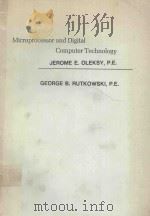
- MICROPROCESSOR AND DIGITAL COMPUTER TECHNOLOGY
- 1981 GEORGE B. RUTKOWSKI"
-
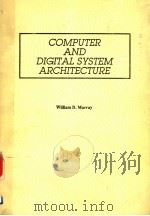
- COMPUTER AND DIGITAL SYSTEM ARCHITECTURE
- PRENTICE HALL
-

- VERILOG DIGITAL COMPUTER DESIGN
- 1999 PRENTICE HALL PTR
-
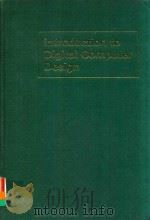
- INTRODUCTION TO DIGITAL COMPUTER DESIGN
- 1972 MC GRAW HILL
-
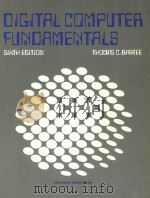
- DIGITAL COMPUTER FUNDAMENTALS SIXTH EDITION
- 1986 MCGRAW-HILL BOOK COMPANY
-
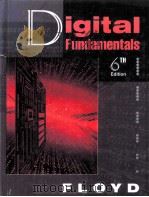
- DIGITAL FUNDAMENTALS SIXTH EDITION
- 1997 PRENTICE HALL
-

- ANALOGUE AND DIGITAL COMPUTER METHODS
- 1964 TEMPLE PRESS BOOKS
-
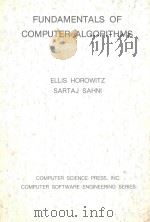
- FUNDAMENTALS OF COMPUTER ALGORITHMS
- 1978 COPYRIGHT
-
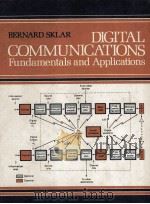
- DIGITAL COMMUNICATIONS Fundamentals and Applications
- 1988 Prentice Hall
-

- Computer Science Fundamentals
- 1979 Bll & Howell Company
-
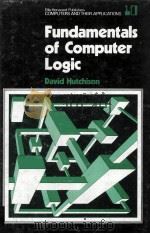
- Fundamentals of Computer Logic
- 1981 Ellis Horwood Limited
提示:百度云已更名为百度网盘(百度盘),天翼云盘、微盘下载地址……暂未提供。➥ PDF文字可复制化或转WORD

